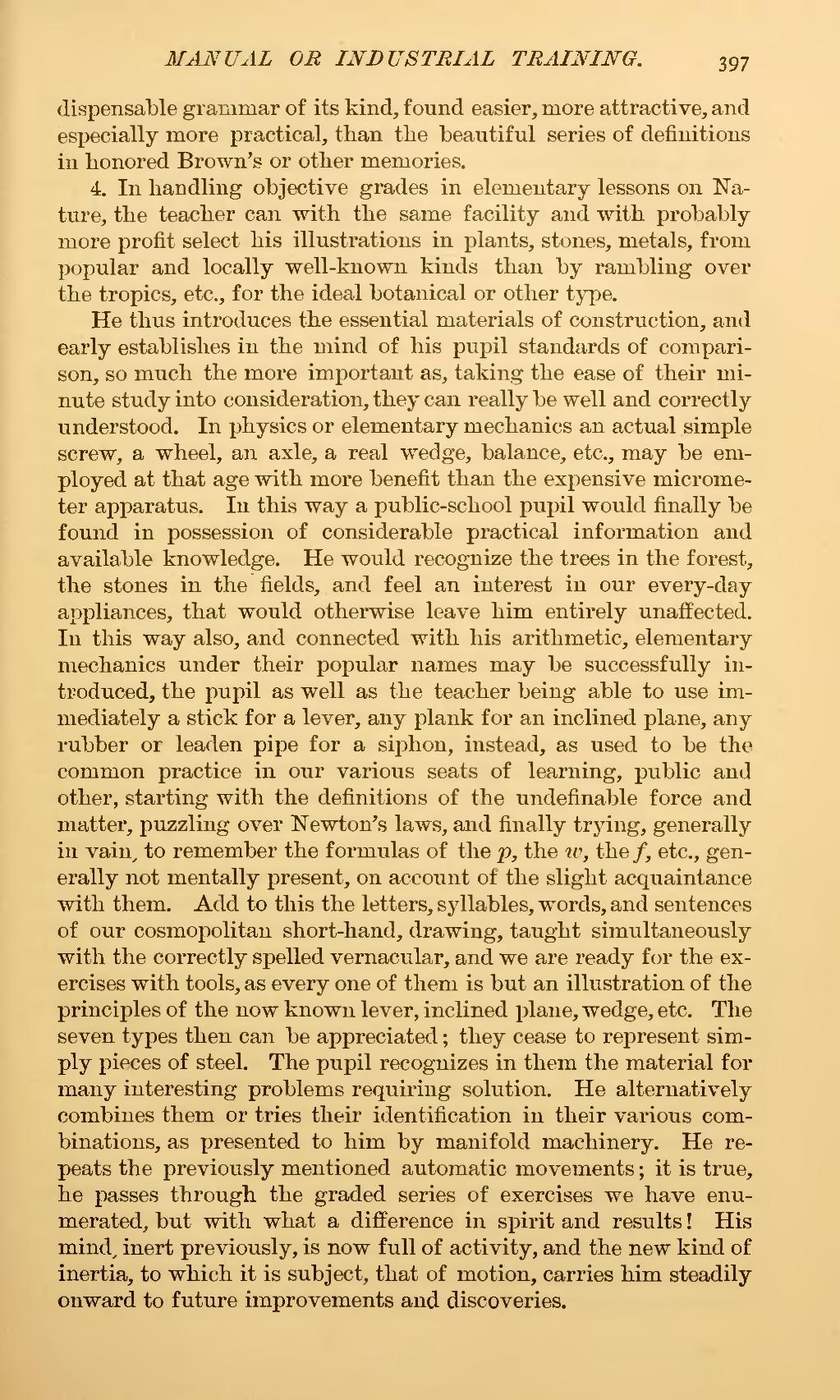dispensable grammar of its kind, found easier, more attractive, and especially more practical, than the beautiful series of definitions in honored Brown's or other memories.
4. In handling objective grades in elementary lessons on Nature, the teacher can with the same facility and with probably more profit select his illustrations in plants, stones, metals, from popular and locally well-known kinds than by rambling over the tropics, etc., for the ideal botanical or other type.
He thus introduces the essential materials of construction, and early establishes in the mind of his pupil standards of comparison, so much the more important as, taking the ease of their minute study into consideration, they can really be well and correctly understood. In physics or elementary mechanics an actual simple screw, a wheel, an axle, a real wedge, balance, etc., may be employed at that age with more benefit than the expensive micrometer apparatus. In this way a public-school pupil would finally be found in possession of considerable practical information and available knowledge. He would recognize the trees in the forest, the stones in the fields, and feel an interest in our every-day appliances, that would otherwise leave him entirely unaffected. In this way also, and connected with his arithmetic, elementary mechanics under their popular names may be successfully introduced, the pupil as well as the teacher being able to use immediately a stick for a lever, any plank for an inclined plane, any rubber or leaden pipe for a siphon, instead, as used to be the common practice in our various seats of learning, public and other, starting with the definitions of the undefinable force and matter, puzzling over Newton's laws, and finally trying, generally in vain to remember the formulas of the p, the w, the f, etc., generally not mentally present, on account of the slight acquaintance with them. Add to this the letters, syllables, words, and sentences of our cosmopolitan short-hand, drawing, taught simultaneously with the correctly spelled vernacular, and we are ready for the exercises with tools, as every one of them is but an illustration of the principles of the now known lever, inclined plane, wedge, etc. The seven types then can be appreciated; they cease to represent simply pieces of steel. The pupil recognizes in them the material for many interesting problems requiring solution. He alternatively combines them or tries their identification in their various combinations, as presented to him by manifold machinery. He repeats the previously mentioned automatic movements; it is true, he passes through the graded series of exercises we have enumerated, but with what a difference in spirit and results! His mind, inert previously, is now full of activity, and the new kind of inertia, to which it is subject, that of motion, carries him steadily onward to future improvements and discoveries.
